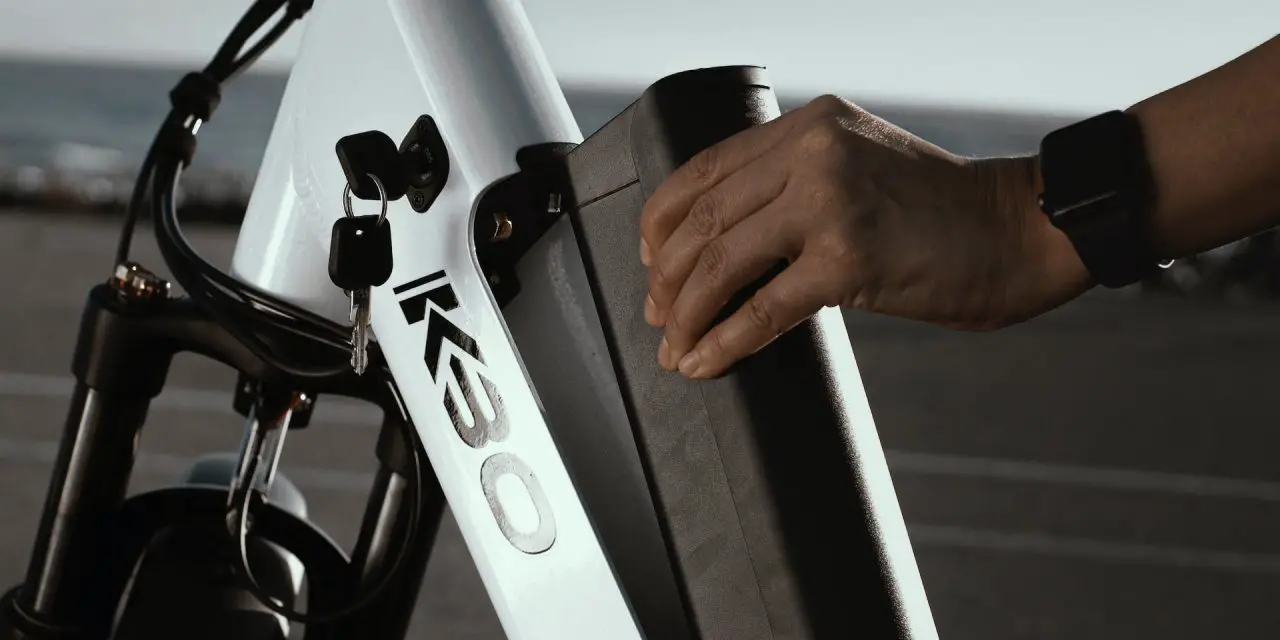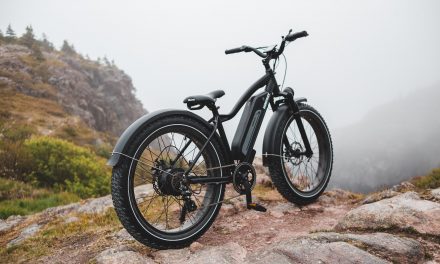Bicycling can provide an excellent way to strengthen heart muscles and navigate easily through congested towns. With e-bikes creating opportunity for more people to go out and ride their bike, it’s no wonder they have increased in popularity. Since these bikes use rechargeable batteries, one way to increase their lifespan is by charging them correctly. With this understanding, is it advisable to charge your e-bike’s battery to 100%?
You should only charge your e-bike to 100% for the first time after buying it. After the first time, never charge your e-bike to 100%. The ideal percentage to charge your e-bike is between 80 to 85 if you want to extend the battery’s lifespan.
In the rest of this article, I’ll discuss whether you can overcharge your e-bike battery and the risks associated with overcharging. I’ll also discuss how to charge an electric bike’s battery. Let’s get started!
Can You Overcharge Your Ebike Battery?
Overcharging happens when you charge a battery higher than the specified voltage. Most e-bikes come with batteries rated 48 or 52 volts. Therefore, charging a 48-volt e-bike battery to 50 volts is overcharging it.
You can overcharge your electric bike battery depending on how you charge it and the type of charger. An e-bike may have an automatic, trickle, or regular charger. The automatic charger is the best option since it prevents overcharging. Once the battery is fully charged, an automatic charger cuts off the current flow, preventing overcharging.
Some situations that can cause overcharging in electric bikes include the following:
- Using a charger for a different electric bike
- Using a charger with a different voltage rating
- Leaving the battery plugged into the charging port for too long
How To Charge Your E-Bike Battery
One way to damage your e-bike battery is by charging it the wrong way. Since these batteries are expensive, charging them incorrectly will shorten their lifespan and cost you more. More often than not, improperly charged e-bike batteries have reduced ranges.
It’s advisable to charge a brand-new electric bike for 12 hours. This is the only time it’s safe to charge your e-bike to 100%.
Charging a brand-new e-bike for 12 hours ensures the battery is fully-charged and ready for regular operation. The long initial charge supplies current to all the cells, conditioning the battery for the long run.
After the initial charge, never charge the battery past 85%. The ideal charging range should be between 80 and 85%. This is because e-bike batteries, especially lithium-ion ones, degrade over time when charged to higher voltages.
It’s also advised to charge the battery when it gets to 30 or 40 percent instead of waiting until it’s completely drained. Draining your e-bike battery completely destroys the cells, reducing their capacity to hold charge.
Moreover, draining a battery entirely before charging might cause swelling under certain conditions, like high temperatures.
Finally, never leave your e-bike plugged in for too long if you’re using a regular charger. The recommended time is between 2 to 6 hours, depending on the battery type and capacity.
The following are some safety considerations when charging your electric bike:
- Do not charge the battery at or below freezing point. Charging the battery at 0°C (32°F) or below causes plating. Consequently, the battery will have high resistance and low capacity.
- Do not charge the battery in wet or humid areas. This can cause a short circuit, leading to injury or fire.
- Don’t keep the battery in extremely hot or cold temperatures. You should always keep the battery at room temperature between 15 and 25°C (59 and 77°F). The environment should also be dry.
- Only charge with the correct charger. You should use the charger that came with your e-bike or one recommended by the manufacturer. This prevents overcharging the battery or damaging the cells due to high charging rates.
- Keep the battery charged. It’s advisable to keep the battery charged even if you don’t use the bike. Keeping the battery discharged for long exposes it to sulfation. When this happens, the battery will have a reduced capacity. A reduced battery capacity translates to a low bike range.
The Potential Risks of Overcharging Your Ebike Battery
Overcharging your e-bike’s battery is the last thing you want to do. This is because it reduces the battery’s efficiency, leading to the following:
Low Capacity
Overcharging a battery reduces its capacity to hold and store charge.
When overcharging a battery, chemical reactions occur, damaging the cells and plates. This reduces their efficiency in holding a charge, leading to a low-capacity battery.
Increased Resistance
The chemicals in the cells react with each other during overcharging, creating resistance within them. This resistance increases heat production, which can cause permanent damage or even fire.
High battery resistance also drops its voltage.
Reduced Bike Range
The joy of having an electric bike is when you can cover longer ranges without the battery running low. However, this will not be the case if you overcharge the battery.
As already discussed, overcharging reduces a battery’s capacity. When this happens, the battery can no longer hold a high enough charge for a long bike ride. As a result, you’ll always receive a low battery warning before covering the bike’s recommended range.
Sulfation
Sulfation can happen when the battery is overcharged, undercharged, or left without charge for long.
Battery sulfation results from the accumulation of lead sulfate crystals on the battery’s plates. This reduces their ability to hold charge and causes permanent damage to the cells.
Some signs of a sulfated battery are:
- Longer charging times
- Low cranking power
- Reduced battery life
- Excessive heat build-up, which may cause boil out
How To Increase an E-Bike Battery’s Lifespan
You can save some bucks by using the battery the right way, thus increasing its lifespan.
Some of the ways to achieve this include the following:
- Using the correct mode. You should choose the mode depending on the ride. For instance, use the low mode for short distances.
- Ride in favorable conditions. Avoid using the bike when it’s extremely cold or hot since such temperatures can damage the battery.
- Do not overcharge the battery. Always disconnect the charger when the battery gets to 80 or 85 percent.
Conclusion
It’s only advisable to charge your e-bike battery to 100% for the first time. Charging the battery to 100% frequently lowers its charge storage capacity, making it inefficient for riding.
A rule of thumb is to stick to the battery’s user manual guidelines when charging and always consult the bike manufacturer if you have any questions or concerns.




![Can Electric Bikes Be Used Manually without the Battery? [Everything you need to know]](https://bikesfaq.com/wp-content/uploads/2022/09/Electric-Bike-440x264.jpg)










